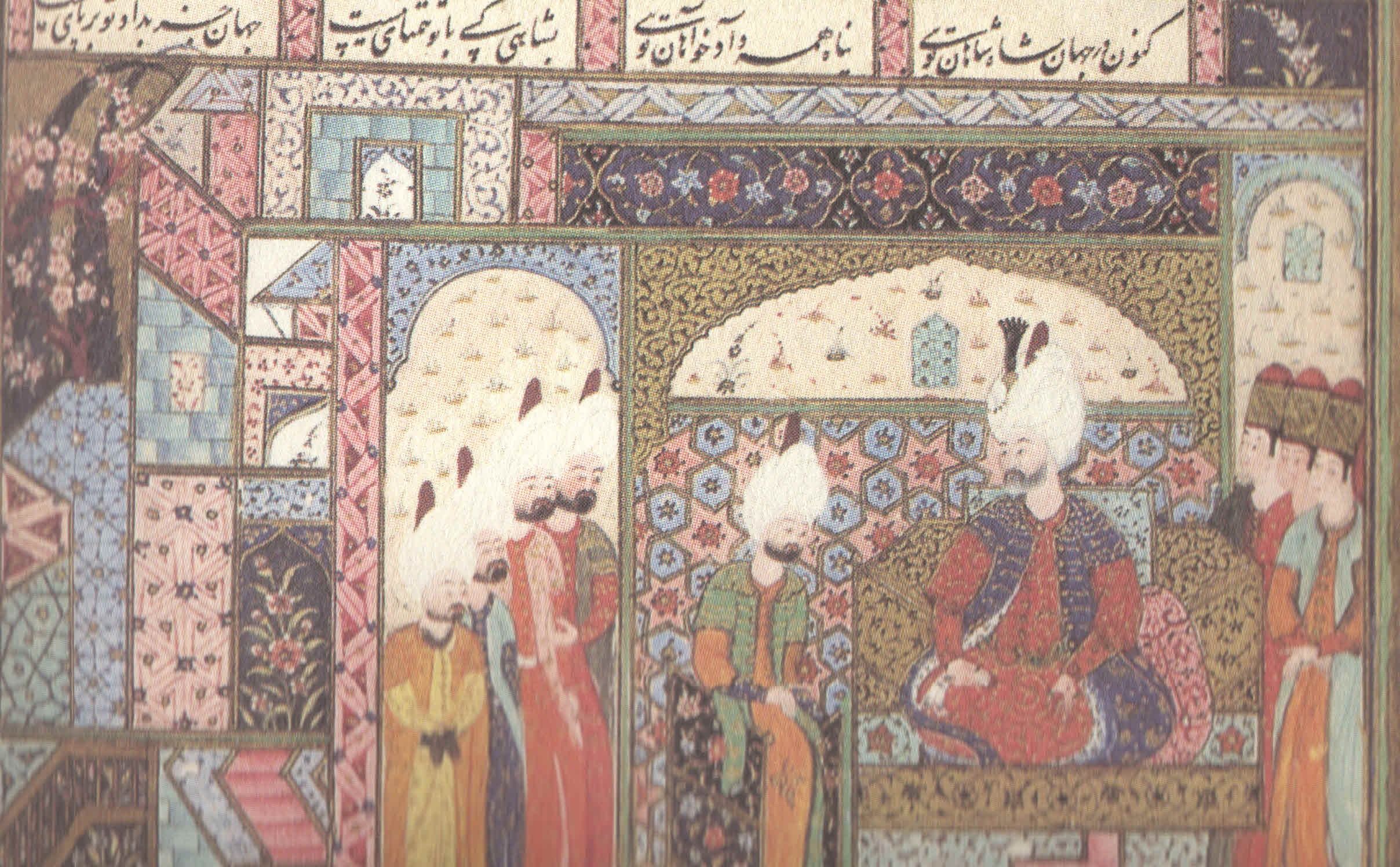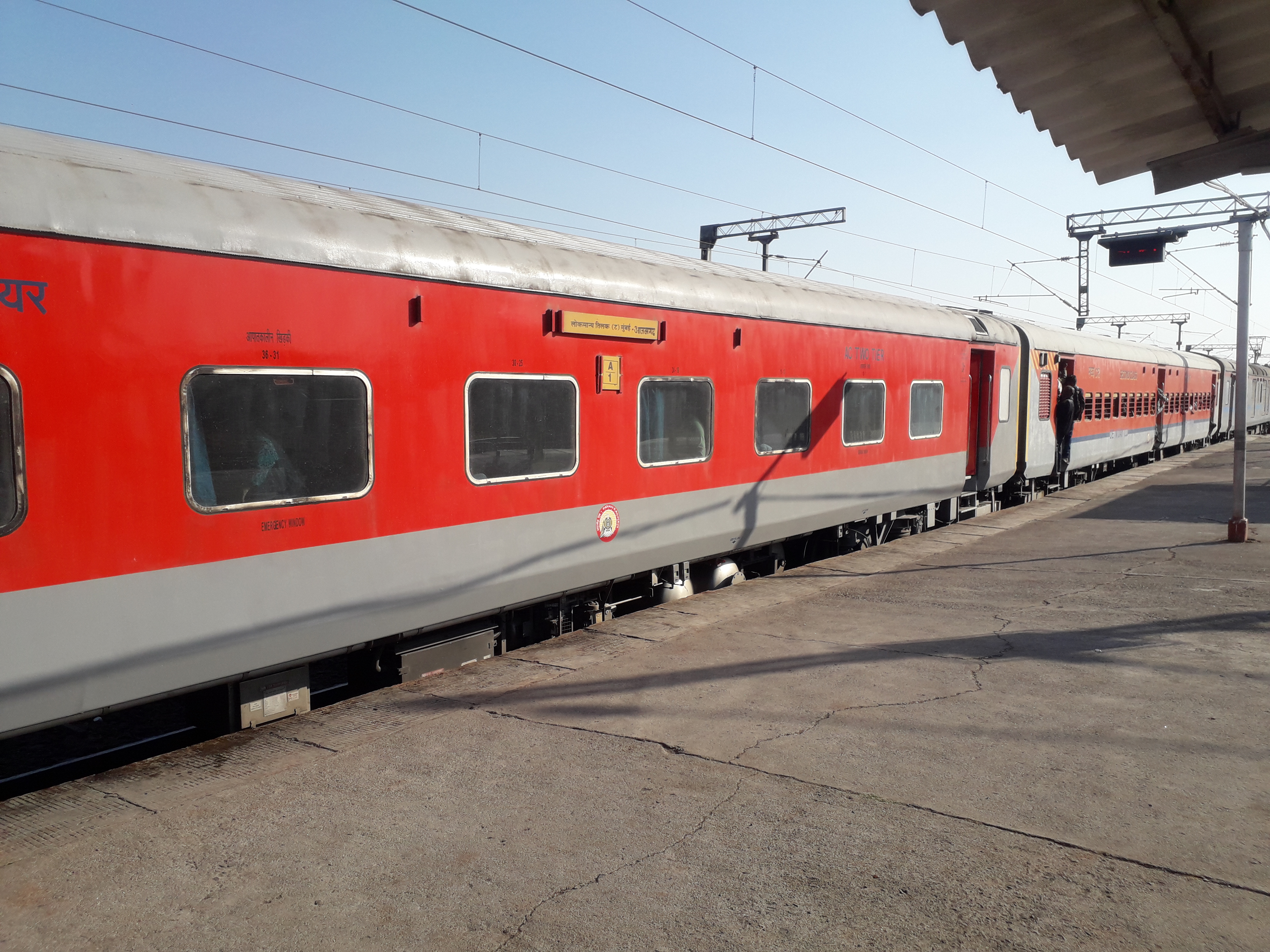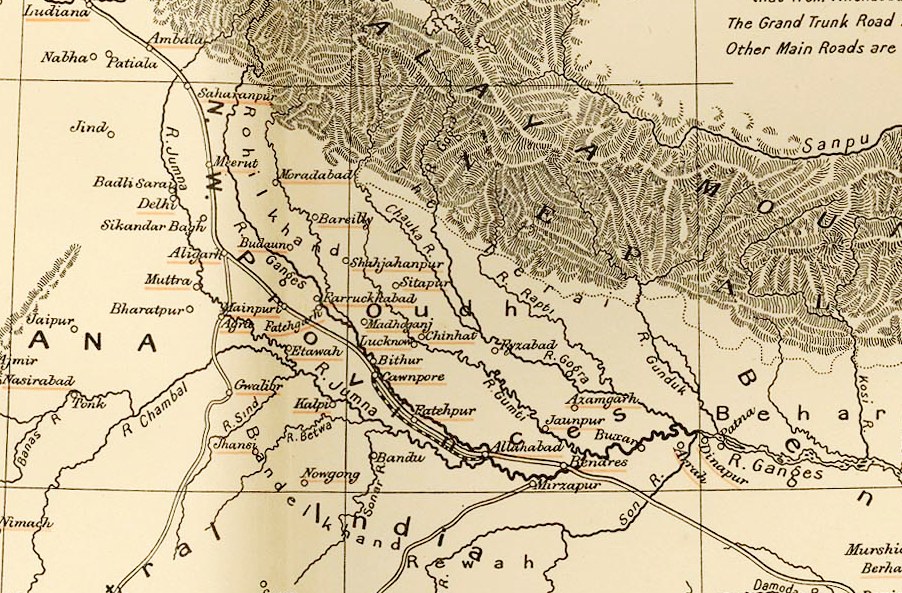|
Wazir Ali Khan
Wazir Ali Khan (19 April 1780 – 15 May 1817) was the fourth Nawab wazir of Oudh from 21 September 1797 to 21 January 1798, and the adopted son of Asaf-Ud-Daulah. Life He was the adopted son of Asaf-Ud-Dowlah, who had no son. He adopted a boy who was the son of his sister. At 13 years of age, Ali was married at the cost of £300,000 in Lucknow. After the death of his surrogate father in September 1797, he ascended to the throne (''musnud''), with the support of the British. Within four months they accused him of being unfaithful. Sir John Shore (1751–1834) then moved in with 12 battalions and replaced him with his uncle Saadat Ali Khan II. Ali was granted a pension of 3,00,000 Rupees and moved to Benares. The government in Calcutta decided that he should be removed further from his former realm. George Frederick Cherry, a British resident, relayed this order to him on 14January 1799 during a breakfast invitation at which Ali had appeared with an armed guard. During the ... [...More Info...] [...Related Items...] OR: [Wikipedia] [Google] [Baidu] |
Mirza (noble)
Mirza ( or ; fa, میرزا) is a name of Persian origin. It is used as a surname or prefix to identify patriarchal lineage. It is a historical royal and noble title, denoting the rank of a royal prince, high nobleman, distinguished military commander, or a scholar. Specifically, it was used as a title by (and today signifies patriarchal lineage to) the various Persian Empires, the Nogai Horde, Shirvanshahs and Circassians of the European Caucasus, as well as the Muslim Rajputs and mainly the Mughals / Moguls, both of the Indian Subcontinent. It was also a title bestowed upon members of the highest aristocracies in Tatar states, such as the Khanates of Kazan and Astrakhan. Etymology The original title ''Mīrzā'' or ''Merzāh'' is derived from the Persian term ''Amīrzādeh'' which literally means ''child of the Amīr'' or ''child of the ruler''. ''Amīrzādeh'' in turn consists of the Arabic title ''Amīr'' (English: ''Emir''), meaning "commander" and the Persian suf ... [...More Info...] [...Related Items...] OR: [Wikipedia] [Google] [Baidu] |
Calcutta
Kolkata (, or , ; also known as Calcutta , List of renamed places in India#West Bengal, the official name until 2001) is the Capital city, capital of the Indian States and union territories of India, state of West Bengal, on the eastern bank of the Hooghly River west of the border with Bangladesh. It is the primary business, commercial, and financial hub of East India, Eastern India and the main port of communication for North-East India. According to the 2011 Indian census, Kolkata is the List of cities in India by population, seventh-most populous city in India, with a population of 45 lakh (4.5 million) residents within the city limits, and a population of over 1.41 crore (14.1 million) residents in the Kolkata metropolitan area, Kolkata Metropolitan Area. It is the List of metropolitan areas in India, third-most populous metropolitan area in India. In 2021, the Kolkata metropolitan area crossed 1.5 crore (15 million) registered voters. The ... [...More Info...] [...Related Items...] OR: [Wikipedia] [Google] [Baidu] |
People From Lucknow
A person ( : people) is a being that has certain capacities or attributes such as reason, morality, consciousness or self-consciousness, and being a part of a culturally established form of social relations such as kinship, ownership of property, or legal responsibility. The defining features of personhood and, consequently, what makes a person count as a person, differ widely among cultures and contexts. In addition to the question of personhood, of what makes a being count as a person to begin with, there are further questions about personal identity and self: both about what makes any particular person that particular person instead of another, and about what makes a person at one time the same person as they were or will be at another time despite any intervening changes. The plural form "people" is often used to refer to an entire nation or ethnic group (as in "a people"), and this was the original meaning of the word; it subsequently acquired its use as a plural form of ... [...More Info...] [...Related Items...] OR: [Wikipedia] [Google] [Baidu] |
1780 Births
Year 178 ( CLXXVIII) was a common year starting on Wednesday (link will display the full calendar) of the Julian calendar. At the time, it was known as the Year of the Consulship of Scipio and Rufus (or, less frequently, year 931 ''Ab urbe condita''). The denomination 178 for this year has been used since the early medieval period, when the Anno Domini calendar era became the prevalent method in Europe for naming years. Events By place Roman Empire * Bruttia Crispina marries Commodus, and receives the title of '' Augusta''. * Emperor Marcus Aurelius and his son Commodus arrive at Carnuntum in Pannonia, and travel to the Danube to fight against the Marcomanni. Asia * Last (7th) year of ''Xiping'' era and start of ''Guanghe'' era of the Chinese Han Dynasty. * In India, the decline of the Kushan Empire begins. The Sassanides take over Central Asia. Religion * The Montanist heresy is condemned for the first time. Births * Lü Meng, Chinese general (d. 220) * Pe ... [...More Info...] [...Related Items...] OR: [Wikipedia] [Google] [Baidu] |
Habib Tanvir
Habib Tanvir (1 September 1923 – 8 June 2009) was one of the most popular Indian Urdu, Hindi playwrights, a theatre director, poet and actor. He was the writer of plays such as, ''Agra Bazar'' (1954) and '' Charandas Chor'' (1975). A pioneer in Urdu and Hindi theatre, he was most known for his work with Chhattisgarhi tribals, at the Naya Theatre, a theatre company he founded in 1959 in Bhopal. He went on to include indigenous performance forms such as ''nacha'', to create not only a new theatrical language, but also milestones such as ''Charandas Chor'', ''Gaon ka Naam Sasural, Mor Naam Damad'' and ''Kamdeo ka Apna Basant Ritu ka Sapna''. For him, true "theatre of the people" existed in the villages, which he strived to bring to the urban "educated", employing both folk performers as actors alongside urban actors. He died on 8 June 2009 at Bhopal after a three-week-long illness. Upon his death, he was the last of pioneering actor-managers in Indian theatre, which includ ... [...More Info...] [...Related Items...] OR: [Wikipedia] [Google] [Baidu] |
Nawab Of Oudh
The Nawab of Awadh or the Nawab of Oudh was the title of the rulers who governed the state of Awadh (anglicised as Oudh) in north India during the 18th and 19th centuries. The Nawabs of Awadh belonged to a dynasty of Persian origin from Nishapur, Iran.''Encyclopædia Iranica'' R. B. Barnett In 1724, Nawab Saadat Ali Khan I, Sa'adat Khan established the Oudh State with their capital in Faizabad and Lucknow. History The Nawabs of Awadh were semi-autonomous rulers within the fragmented polities of Mughal India after the death in 1707 of Aurangzeb. They fought wars with the Peshwa, the Battle of Bhopal (1737) against the Maratha Confederacy (which was opposed to the Mughal Empire), and the Battle of Karnal (1739) as courtiers of the "Great Moghul". The Nawabs of Awadh, along with many other Nawabs, were regarded as members of the nobility of the greater Mughal Empire. They joined Ahmad Shah Durrani during the Third Battle of Panipat (1761) and restored Shah Alam II ( and 1788� ... [...More Info...] [...Related Items...] OR: [Wikipedia] [Google] [Baidu] |
Bengal Presidency
The Bengal Presidency, officially the Presidency of Fort William and later Bengal Province, was a subdivision of the British Empire in India. At the height of its territorial jurisdiction, it covered large parts of what is now South Asia and Southeast Asia. Bengal proper covered the ethno-linguistic region of Bengal (present-day Bangladesh and the Indian state of West Bengal). Calcutta, the city which grew around Fort William, was the capital of the Bengal Presidency. For many years, the Governor of Bengal was concurrently the Viceroy of India and Calcutta was the de facto capital of India until 1911. The Bengal Presidency emerged from trading posts established in Mughal Bengal during the reign of Emperor Jahangir in 1612. The East India Company (HEIC), a British monopoly with a Royal Charter, competed with other European companies to gain influence in Bengal. After the decisive overthrow of the Nawab of Bengal in 1757 and the Battle of Buxar in 1764, the HEIC expan ... [...More Info...] [...Related Items...] OR: [Wikipedia] [Google] [Baidu] |
Arthur Wellesley, 2nd Duke Of Wellington
Arthur is a common male given name of Brythonic origin. Its popularity derives from it being the name of the legendary hero King Arthur. The etymology is disputed. It may derive from the Celtic ''Artos'' meaning “Bear”. Another theory, more widely believed, is that the name is derived from the Roman clan '' Artorius'' who lived in Roman Britain for centuries. A common spelling variant used in many Slavic, Romance, and Germanic languages is Artur. In Spanish and Italian it is Arturo. Etymology The earliest datable attestation of the name Arthur is in the early 9th century Welsh-Latin text '' Historia Brittonum'', where it refers to a circa 5th to 6th-century Briton general who fought against the invading Saxons, and who later gave rise to the famous King Arthur of medieval legend and literature. A possible earlier mention of the same man is to be found in the epic Welsh poem ''Y Gododdin'' by Aneirin, which some scholars assign to the late 6th century, though this is still ... [...More Info...] [...Related Items...] OR: [Wikipedia] [Google] [Baidu] |
Jaipur
Jaipur (; Hindi: ''Jayapura''), formerly Jeypore, is the capital and largest city of the Indian state of Rajasthan. , the city had a population of 3.1 million, making it the tenth most populous city in the country. Jaipur is also known as the ''Pink City'', due to the dominant colour scheme of its buildings. It is also known as the Paris of India, and C. V. Raman called it the ''Island of Glory''. It is located from the national capital New Delhi. Jaipur was founded in 1727 by the Kachhwaha Rajput ruler Jai Singh II, the ruler of Amer, after whom the city is named. It was one of the earliest planned cities of modern India, designed by Vidyadhar Bhattacharya. During the British Colonial period, the city served as the capital of Jaipur State. After independence in 1947, Jaipur was made the capital of the newly formed state of Rajasthan. Jaipur is a popular tourist destination in India and forms a part of the west Golden Triangle tourist circuit along with Delhi a ... [...More Info...] [...Related Items...] OR: [Wikipedia] [Google] [Baidu] |
Rajputana
Rājputana, meaning "Land of the Rajputs", was a region in the Indian subcontinent that included mainly the present-day Indian state of Rajasthan, as well as parts of Madhya Pradesh and Gujarat, and some adjoining areas of Sindh in modern-day southern Pakistan. The main settlements to the west of the Aravalli Hills came to be known as ''Rajputana'', early in the Medieval Period. The name was later adopted by British government as the Rajputana Agency for its dependencies in the region of the present-day Indian state of Rājasthān. The Rajputana Agency included 18 princely states, two chiefships and the British district of Ajmer-Merwara. This British official term remained until its replacement by "Rajasthan" in the constitution of 1949. Name George Thomas (''Military Memories'') was the first in 1800, to term this region the ''Rajputana Agency''. The historian John Keay in his book, ''India: A History'', stated that the ''Rajputana'' name was coined by the British, but that ... [...More Info...] [...Related Items...] OR: [Wikipedia] [Google] [Baidu] |
Azamgarh
Azamgarh is a city in the Indian state of Uttar Pradesh. It is the headquarters of Azamgarh division, which consists of Ballia, Mau and Azamgarh districts. Azamgarh is situated on the bank of Tamsa River (Tons). It is located east of the state capital Lucknow and 809 km from national capital, Delhi. History Azamgarh, one of the easternmost districts(a district in Purvanchal sub-region) of Uttar Pradesh, once formed a part of the ancient Kosala kingdom, except its north-eastern part. Azamgarh is also known as the land of the sage Durvasa whose ashram was located in Phulpur tehsil, near the confluence of Tamsa and Majhuee rivers, north of the Phulpur. The district is named after its headquarters town, Azamgarh, which was founded in 1665 by Azam, son of Vikramajit. Vikramajit was a descendant of Gautam Rajputs of Mehnagar in Pargana Nizamabad who like some of his predecessors had embraced the faith of Islam. He had a Muslim wife who bore him two sons Azam and Azmat ... [...More Info...] [...Related Items...] OR: [Wikipedia] [Google] [Baidu] |
Massacre Of Benares
The Massacre of Benares is the name given to the minor and unsuccessful insurrection of Wazir Ali Khan, deposed Nawab of Awadh, at Benares in northern India in 1799, in which five British East India Company officials and civilians were murdered. Wazir Ali's uprising resulted in his imprisonment for the remainder of his life. Background Oudh State, the Kingdom of Oudh, or Awadh, was a princely state in the Awadh region of north-central India during the British Raj, occupying the plain of the Ganges and immediately south and west of Nepal. Its capital was Lucknow, one of the richest of the northern Indian cities. The British Resident in Lucknow, up until July 1796, was George Frederick Cherry; the role of the Resident was to gather intelligence and, to the extent possible, shape events such that they favoured the interests of the East India Company. Cherry excelled as a spy-master and was inevitably associated with, or interested in, the intrigues of the Nawab's court and state, to ... [...More Info...] [...Related Items...] OR: [Wikipedia] [Google] [Baidu] |


_1938.jpg)






